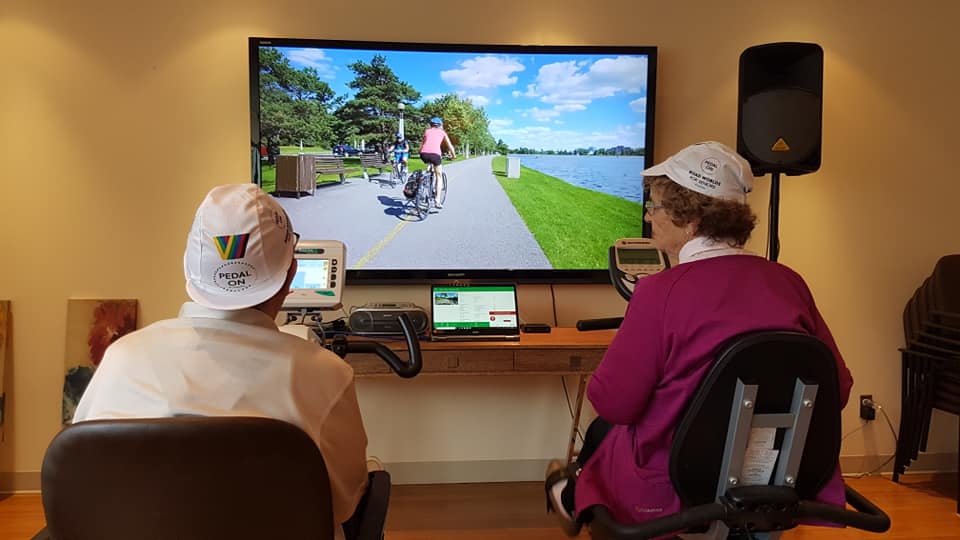
Erin Pollitt suffered a serious spinal injury in her second year of professional dance training.
While practicing a difficult move during rehearsals at the Northern School for Contemporary Dance in Leeds, she fell to the floor and suddenly felt a sharp pain at the base of her spine.
She was booked in to see the school’s physio the next day, feeling the full impact of the fall after being unable to walk properly or move as she normally could.
Here began the long process of getting to the bottom of what was wrong with her.
After numerous trips to the physio and multiple scans, it was eventually revealed that she had compressed a spinal disc in her lower back which was pressing against a nerve.
Furthermore, there was ligament damage in her pelvis leaving Erin, 24, in serious pain.
 After seeing a top consultant for spinal injuries she was given the news she had been dreading.
After seeing a top consultant for spinal injuries she was given the news she had been dreading.
Erin was told she would likely need to end her career as a dancer.
Most would see this as a chapter of their life ending and reluctantly accept what had been lost. But Erin simply saw it as a challenge.
Speaking to NR Times, Erin says her approach to dealing with her injury completely changed after her conversation with the consultant.
“I didn’t take no for an answer,” she says. “Up until then I had just been fumbling through the pain and hadn’t really put anything in place to help rehabilitate myself.
“But after he said that, I thought I’m going to really focus on getting better so that I don’t have to stop my dance career.”
From here Erin began what was a year long rehabilitation process, beginning with restoring simple and small movements.
Then she progressed to a short dance session, where her pain would only allow her to practice for just ten minutes initially.
“It was very slow, tiny movements to start with,” Erin says. “Very slowly, I’d do around ten minutes of dancing and then it had to stop. And then the next week maybe I’d push it to 15, so it was so slow.
“It was a really long process of core strengthening and Pilates and relearning how to support the muscles around my spine.
“The process wasn’t necessarily learning to move again, but I was learning to articulate that part of my body in a much safer way.”
The rehabilitation process was not only physically painful for Erin, but it was also a mental struggle.
Having to sit on the sidelines and watch her peers was difficult, particularly amid the fear that she may never be able to join them again.
“It was incredibly tough, and also very lonely because everyone else was training and I had to sit every day and watch them do what I couldn’t.
“Because we were all in a three year training programme together, I just felt like I was missing out on so much time and watching everyone else get ahead of me.
“The thought of never being able to dance again and thinking I’m going to have to live with this pain for the rest of my life was really scary.
“I remember so many times thinking ‘I don’t know how I’m going to carry on with this level of pain’ or not being able to do what I’ve always wanted to.”
 Having persisted with her rehabilitation, Erin eventually returned to the Northern School for Contemporary Dance where she was able to graduate.
Having persisted with her rehabilitation, Erin eventually returned to the Northern School for Contemporary Dance where she was able to graduate.
She then went on to complete a Masters at London Contemporary Dance School where she used her experiences to complete her thesis on the psychological impact of injury on dancers.
Erin spoke to numerous others who had endured something similar and her work was of such a high standard that it was published in the Journal of Dance Medicine and Science.
“I thought about how I can do some research that may benefit people going through a similar thing, so I began reading about how injury can affect a dancer’s mental health.
“It was so difficult for me not only physically, but to just keep going and keep believing that I will get better.
“Eventually I put something together that felt quite important, to talk about the fact that injury is something that most dancers will go through and it’s actually really traumatic to deal with.
“I feel quite proud that, although at the time it was awful, something positive came about and I’ve been able to contribute to the conversation around that.”
Erin has since set up her own dance school, Matter of Fact, which launched last year.
After graduating she also went on to perform with a range of contemporary dance companies across Europe, in countries such as Portugal, Switzerland and Italy.
This adds to her already impressive career, having competed at international level in rhythmic gymnastics as a teenager.
“I’m looking forward to doing lots more performing now that the theatres are opening up again, because I am healthy now and I am getting back on that stage.
“I’m also looking forward to growing my company and doing more performances and choreographing for different organisations and companies.
“With the research I did for my thesis I’d really like to, in time, progress that further and see what else I can do.
“In many years time I’d like to work with injured dancers, helping them through a tough time and being that person there to support them.”










